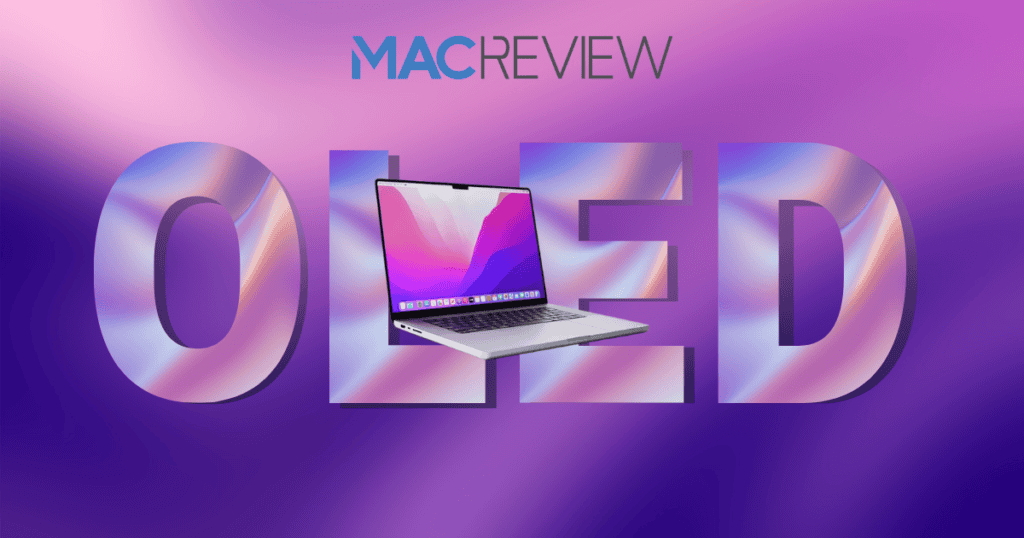Apple’s innovation journey continues as the company pushes forward with plans to integrate OLED displays into its MacBook Pro lineup. Known for redefining user experiences, Apple’s transition to OLED technology signals a significant leap in display quality and device design. While these OLED MacBooks aren’t expected until 2026 or 2027, Apple is actively encouraging its suppliers, including tech giants LG and Samsung, to invest in the necessary manufacturing capabilities.
In this post, we’ll explore Apple’s OLED strategy, the benefits of this cutting-edge display technology, and what this shift means for current and future MacBook models.
The Roadmap to OLED Integration
Apple’s OLED transition won’t happen overnight. According to industry insiders, the company is aiming to launch OLED-equipped MacBook Pro models within the 2026 to 2027 timeframe. This shift aligns with Apple’s commitment to maintaining its position at the forefront of technological advancements while ensuring its suppliers are ready to deliver displays that meet their stringent quality standards.
Supplier Partnerships
Leading display manufacturers LG and Samsung are expected to play pivotal roles in Apple’s OLED transition. Both companies already produce OLED panels for smartphones and televisions, and their expertise will be critical in scaling production to meet the larger dimensions and unique requirements of laptop displays.
Why OLED? Exploring the Benefits of OLED Displays
Enhanced Display Quality
OLED technology represents a substantial improvement over current mini-LED screens used in the MacBook Pro lineup. Some key benefits include:
- Increased Brightness: OLED panels can achieve brighter displays, ideal for outdoor usage and vibrant visuals.
- Higher Contrast Ratios: Each pixel in an OLED screen emits its own light, resulting in superior contrast and deeper blacks compared to backlit displays.
- Power Efficiency: OLED displays consume less power by only illuminating active pixels, potentially improving battery life.
Potential Design Advancements
The transition to OLED could enable thinner and lighter MacBook Pro designs. Without the need for traditional backlighting, OLED displays take up less space, giving Apple more flexibility in crafting ultra-sleek laptops without compromising performance.
Current MacBook Pro Updates
Incremental Upgrades in 2024
While OLED displays are still a few years away, Apple continues to refine its MacBook Pro lineup. The 2024 MacBook Pro models are set to receive a performance boost with the introduction of the M5, M5 Pro, and M5 Max chips.
- These chips are expected to deliver faster processing speeds, enhanced graphics capabilities, and improved energy efficiency.
- No major redesign is anticipated until the OLED transition, meaning these models will likely maintain the current chassis introduced in recent years.
The M4 Series Refresh
Apple recently rolled out updates featuring the M4 series chips, keeping its laptops competitive in the high-performance computing space. However, the upcoming M5 lineup will ensure Apple stays ahead of the curve, especially as rivals like Intel and AMD push the envelope in laptop chip technology.
How Will OLED Elevate the MacBook Experience?
Creative Professionals and Display Enthusiasts
For graphic designers, video editors, and other creative professionals, OLED displays are a game-changer. The improved color accuracy and dynamic range allow for precise editing and an immersive visual experience.
Everyday Users
Even casual users will notice the difference with OLED. Whether you’re watching movies, browsing photos, or scrolling through web pages, the vibrant colors and true blacks offer a more enjoyable viewing experience.
Longer Battery Life
With power efficiency as a core benefit, OLED screens could extend battery life—an invaluable advantage for users on the go.
What to Expect from OLED MacBooks
Competitive Pricing
Apple products are rarely the cheapest on the market, and OLED MacBooks will likely carry a premium price tag. However, the enhancements in display quality and design will position these laptops as must-haves for power users and professionals.
Gradual Rollout
Apple is expected to introduce OLED displays in high-end MacBook Pro models first, with more affordable models like the MacBook Air potentially receiving the upgrade later.
Industry Implications
Apple’s shift to OLED displays will undoubtedly ripple through the tech industry. As one of the world’s most influential companies, Apple’s decisions often set trends, encouraging other laptop manufacturers to adopt similar technologies. Additionally, LG and Samsung’s ramp-up in OLED production for laptops could lead to broader adoption across various brands.
Preparing for the OLED Future
Should You Wait or Upgrade Now?
If you’re a professional who prioritizes cutting-edge display technology, waiting for OLED MacBooks might be worth it. However, if you need a new laptop in the next two years, the upcoming M5-powered MacBook Pros are still excellent choices, offering performance boosts without the wait.
Stay Updated
As the OLED timeline progresses, keep an eye on announcements from Apple and its suppliers. Knowing when to expect these models can help you plan your upgrade cycle effectively.
Final Thoughts
Apple’s move to OLED displays represents an exciting chapter in the evolution of its MacBook Pro lineup. With superior brightness, contrast ratios, and power efficiency, OLED technology promises to redefine what’s possible in laptop displays. While these models won’t hit the market until 2026 or 2027, Apple’s commitment to innovation ensures they will be worth the wait.
For now, the upcoming MacBook Pro updates with M5 chips will provide a substantial performance boost, catering to users who need cutting-edge technology today. Whether you’re considering an upgrade now or planning for the OLED revolution, Apple’s continuous advancements make the MacBook Pro a compelling choice for any user.




